Due to the Covid-19 pandemic, people all over the world are facing great challenges which are the catalysts for many changes across the board. The way we live, work, eat, and celebrate is changing. The way we interact with each other – as individuals, among societies, as well as on international level – has changed. Consequently, the global crisis has also affected whether or not, how and where we travel.
Personally, I had changed my initial plans to return to Korea in early spring and decided to spend the past 8 months in Germany. After careful consideration, I eventually decided to go back to Korea in August. I have traveled from Germany to Korea numerous times since early childhood, more than 20 times by now. But with the current situation, there were striking differences to the travel routine from “pre-Covid” period. What follows is a personal account of my experiences from my most recent journey to Korea: It includes impressions from the flight as well as new security and health measures, such as the Covid test and mandatory quarantine.* [It was indeed a long journey with many additional steps, hence the seemingly lengthy description below. You can find an overview of how traveling to Korea has changed generally at the bottom of this post. 👇]
UPDATE: In August 2021, one year later, the procedure is almost the same. One important difference is that all travelers are required to bring a negative PCR test certificate (issued up to 72 hours before departure) before their journey to Korea. Regardless of being vaccinated or not. Since travel guidelines are changing constantly, please refer to your Korean embassy for up-to-date information on current requirements.
Take-off from Berlin-Tegel airport
To begin with, my flight was operated by the airline Finnair [no advertising intended!], which offers flights from Berlin to Seoul via Incheon airport. Since there are no direct flights from Berlin to Korea (yet), there was a layover in Helsinki.** So my first flight would take me to Finland.

At the airport’s check-in counter, there was initially confusion about my eligibility to travel to South Korea. Firstly, many visa requirements have changed so that now, e.g. even short-term travelers from Europe and the USA need to apply for a visa in advance. Secondly, and most crucially for me, staff asked for a health certificate with Corona test results, which I had not prepared. Several phone calls [staff] and worrisome minutes [me] later, the issue was resolved: I needed to download two South Korean apps and install them on my cell phone, so they could collect my personal details and information regarding my health status during quarantine. I did not need any additional health certificate and I would be tested for Covid upon arrival in Seoul.
In the end, I was allowed to check in and, as one of the last passengers to pass security control, I boarded the plane. International travel guidelines have been and are continuing to change rapidly, so staying up-to-date is at once difficult and confusing.
Inside plane no. 1: Berlin – Helsinki
The flight from Berlin to Helsinki lasted about 1.5 hours. The plane was rather empty and most passengers had several seats to themselves. Mid-flight, the cabin crew served refreshments and snacks as usual. [I was delighted to see that the snack this time was a kind of cookie which was even vegan!] The crew members wore masks and sanitary gloves. All passengers were required to wear masks, but naturally, people briefly took them off for eating. I waited until most people had finished, before I took off my mask.

Inside the plane 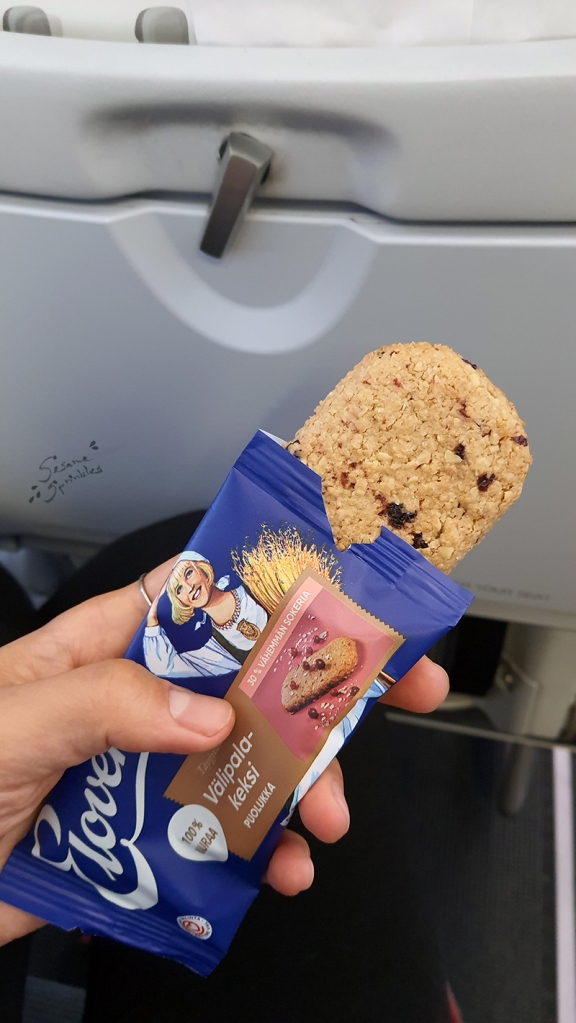
Snack during mid-flight 
Seating space
Layover at Helsinki airport
Once the plane landed at Helsinki airport, passengers were supposed to exit the plane in the order of their seat numbers. This was intended to avoid having crowds of waiting passengers develop in the aisle. Outside the plane, however, passengers were reunited inside a bus which brought us to the arrival gate at the airport.
It was midafternoon, but Helsinki airport was deserted. At Terminal 2, most stores were closed, including duty free shops and big cafes like Starbucks. There were only a few kiosks with snacks and simple souvenirs that were still operating. In other words, no shopping or playing around with perfumes, liquor or cosmetics until the next plane was ready for boarding.

At Helsinki airport 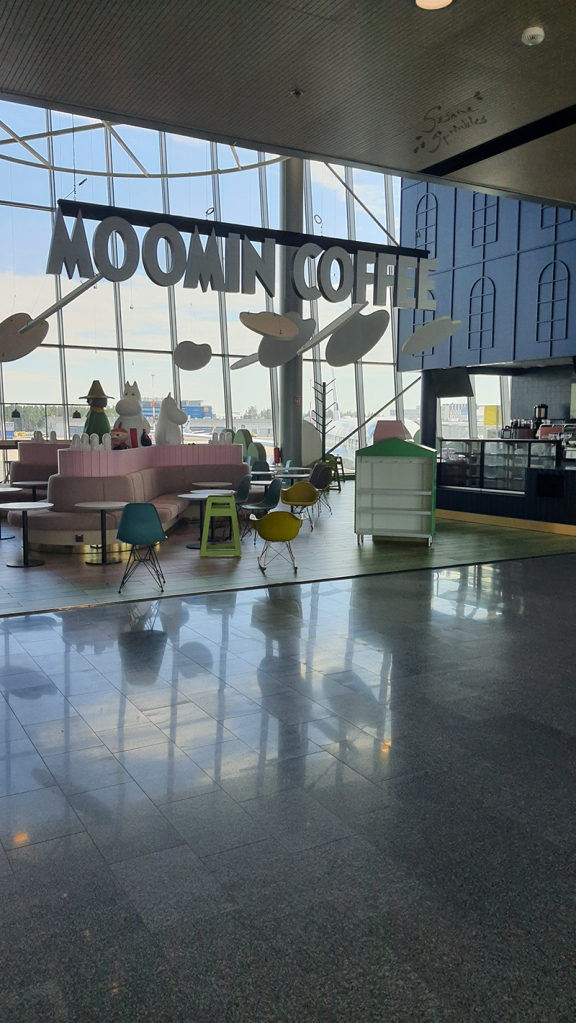
Closed coffee shop 
Most stores not open
Inside plane no. 2: Helsinki – Incheon
Before letting people get on the plane, the airline staff of Finnair checked the passengers’ medical eligibility (health certificate or installed quarantine apps) for entering South Korea once more. On board, some people were seated together while others had an entire row for themselves. I found several empty seats in the back of the plane and moved there, so I could stretch out, sleep more comfortably and also have some distance. After all, this flight from Finland to Korea was going to last roughly 10 hours.
Shortly after take-off, the cabin crew handed out papers to all passengers: First, there was the customs declaration as well as the immigration form, regular paperwork for Korean citizens and foreigners entering South Korea. In addition to that, there were two new documents relating to the Corona pandemic. One was yellow and was called “Health Declaration Form”. The other paper contained information about the two apps mentioned earlier and contained the QR codes for downloading them: The “Self-Diagnosis Mobile App” and the “Self-Quarantine Protection App”.

Health declaration form and information 
Meal no.1 (special order) 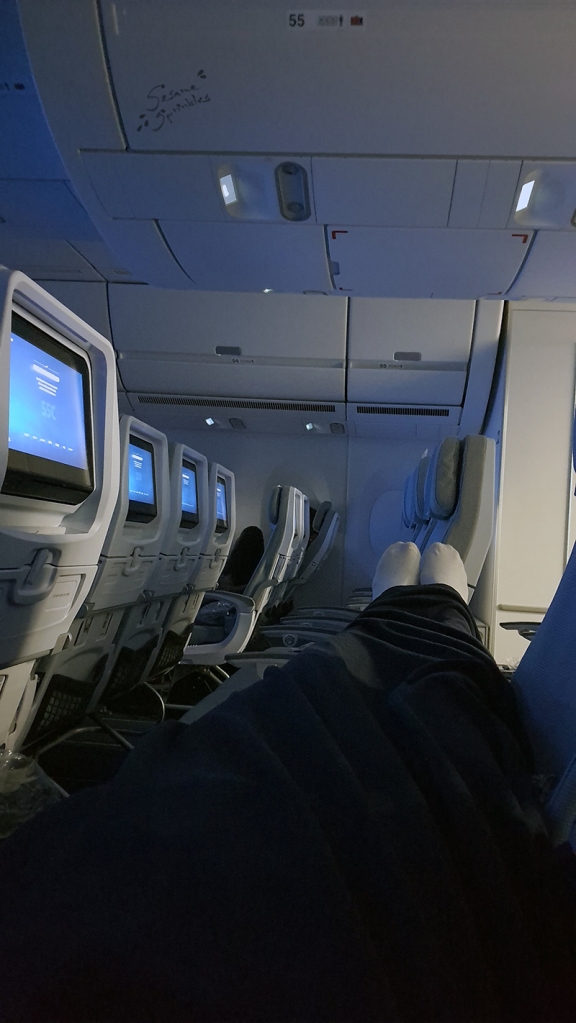
Seating space
On long-distance flights such as this one, food is served twice: Approximately 2 hours after take-off and 2 hours before landing. While “normally”, passengers in Economy class have a choice between two menus, this time, there was only one menu: Lentil lasagna for dinner, then breakfast with omelette and potatoes. To my surprise, everything seemed to be vegetarian. [But since I had ordered a special meal (vegan) in advance, the change did not affect me personally.]*** Besides the fact that there was only one meal each time, the selection of refreshments and drinks was smaller. The flight attendants apologized that at present, the airline did not stock as many items as usual. Another big difference was that there was no self-service bar for snacks and refreshments inside the plane. Instead, there were small bottles of water available. Previously, the center and the back of the plane were also the areas where passengers hung out during flight, enjoying a snack and maybe a conversation with fellow passengers or flight attendants. This time, you could only take a bottle of water to your seat and drink it by yourself. That’s social distancing inside an aircraft!
Also during this flight, except for eating and drinking, passengers and flight attendants continuously wore masks. Staff additionally wore gloves. Soon after the second meal had been served, the scenery changed and the sight of islands suggested we were getting closer to the Korean mainland.
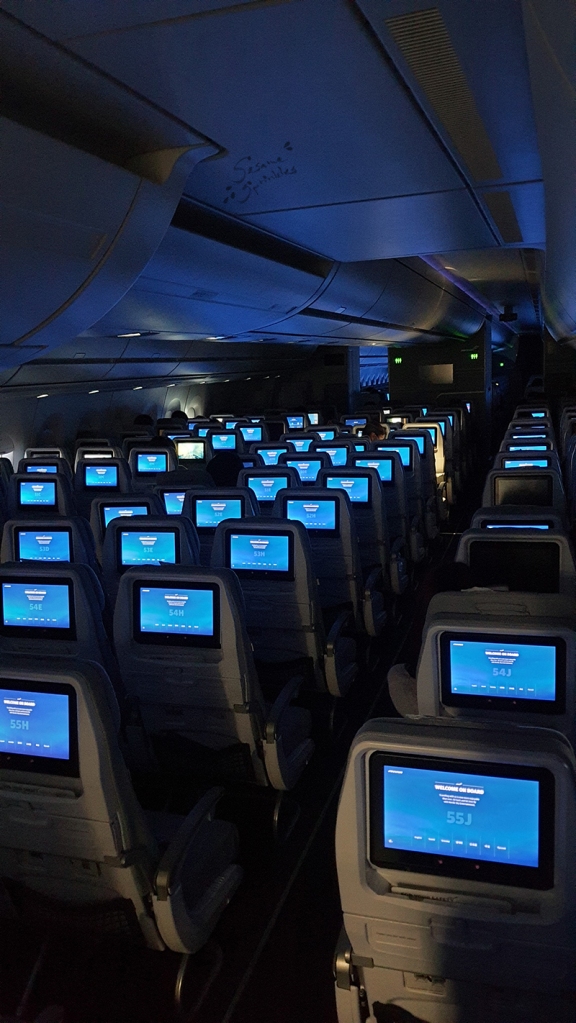
Blue screens (default) suggest unoccupied seats 
Meal no.2 (special order) 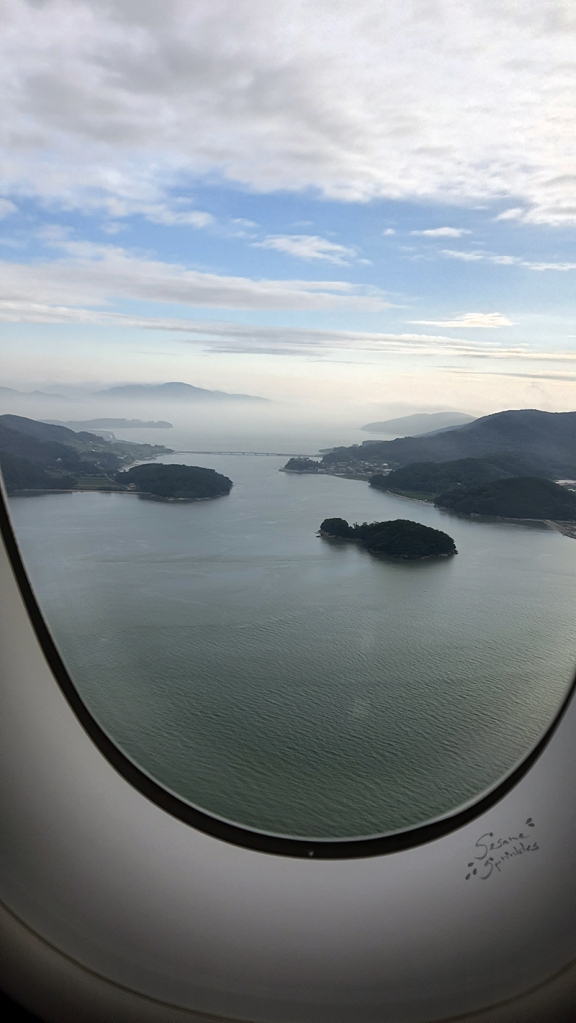
Scenery before landing
Arrival at Incheon airport, step 1: Immigration control
Finally, the plane landed in South Korea. Again, passengers were asked to leave the plane row by row to keep distance from one another.
Next, the passengers exited the arrival gate and queued in front of a gate labelled “Quarantine”. I had never experienced this checkpoint when it was crowded, and people used to simply walk past it while an infrared camera quickly scanned their temperatures. But that day, all passengers were lining up at this checkpoint. While the passengers were waiting, a Korean staff member went down the queue, measuring their temperature and writing the number onto the yellow “Health Declaration Form”. When it was my turn, the official checked my documents and kept the “Health Declaration Form”. In return, I received a new paper containing “Mandatory Quarantine Instructions for All Incoming Travelers to [the] Republic of Korea”.
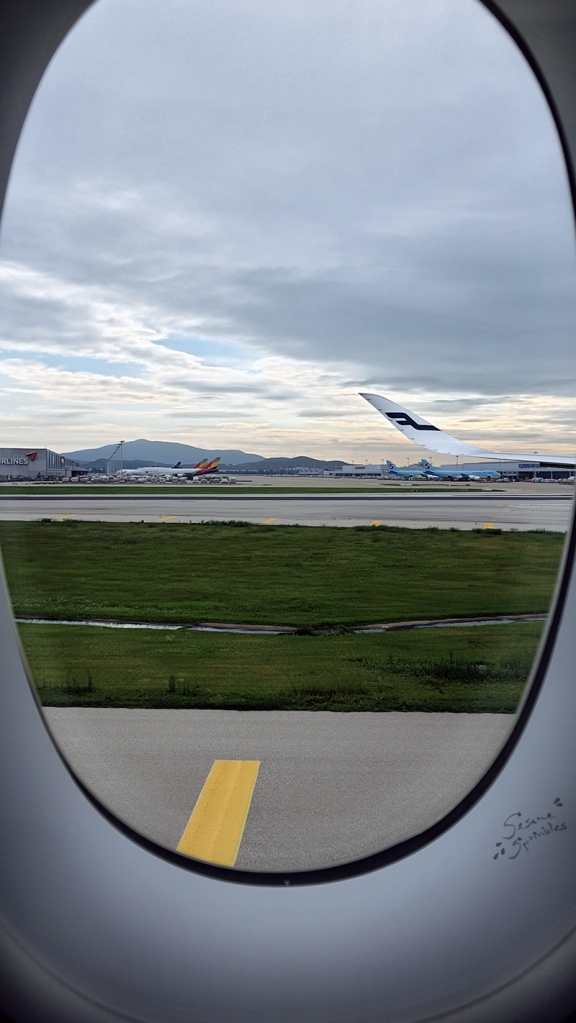
Arrival at Incheon airport 
Quarantine gate 
Information leaflet
Afterwards, passengers walked down the airport until they reached the Immigration Control gates. There was, however, an intricate queue system with several additional checkpoints in front of it. I entered the queuing area for passengers with a foreign passport and waited for my turn.
The first two checkpoints were each operated by Korean soldiers (perhaps currently doing military service), who checked my documents as well as my smart phone. While the first soldier entered information into the health and quarantine mobile apps to set them up for my upcoming 14-day quarantine, the second soldier checked everything again and also called my phone number to confirm it was valid. I passed both examinations and received a small sheet of paper called “Quarantine Certificate” (검역 확인증).

Additional checkpoints 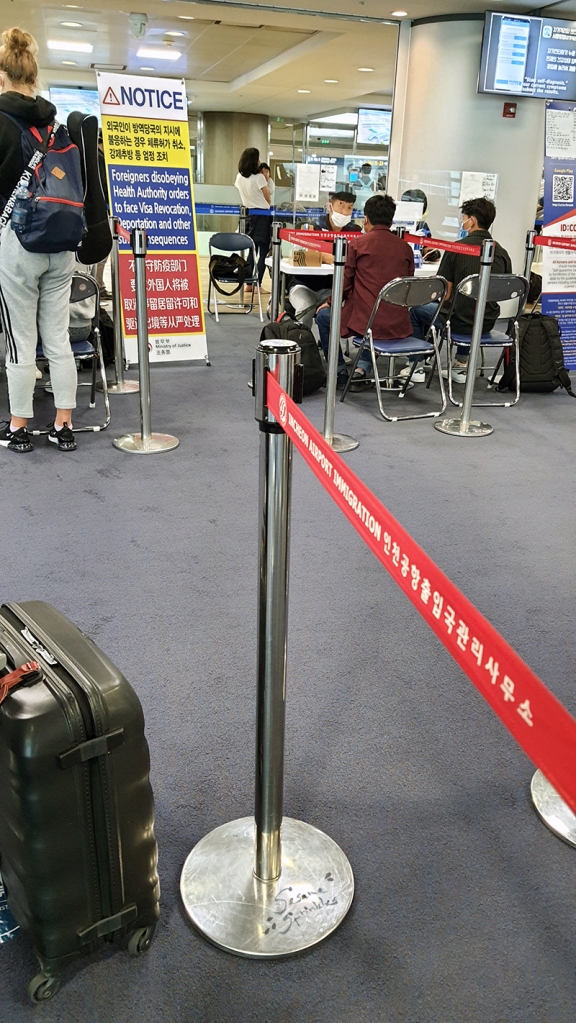
New checkpoint 1 
New checkpoint 2
Then, there was a third new checkpoint, where female staff handed out various new forms and offered assistance in reading them and entering information. Among those were a “Restriction order on the scope of activities” (활동범위 등 제한통지서) and a “Notice of Isolation/Quarantine”, which all needed to be completed and signed. At the fourth checkpoint, a lady checked my documents again and submitted some of the questionnaires, including paperwork regarding the mandatory quarantine.

New checkpoint 3 
New checkpoint 4 
At Immigration Control

Overall, all Korean staff members wore masks and gloves, most were additionally separated from the passengers by plastic screens. I was repeatedly informed that 14 days of quarantine were mandatory and that failure to comply would have severe consequences, e.g. a financial penalty, deportation (foreigners) or imprisonment, wearing of a location-tracking wristband or quarantine in a supervised facility. Another frequent point on the questionnaires was whether I had a contact person in Korea and whether the phone number I provided was my own.
After all these additional checkpoints, I arrived at the regular immigration desk. There, passengers were asked to temporarily remove the mask for identification purposes. The usual procedure of scanning fingerprints and checking the immigration declaration form or alien registration card [for registered long-term visitors like students or permanent residents] also took place. A bottle filled with hand sanitizer was standing on the desk, free of use for passengers. [I cannot recall whether it had always been there, or whether it was newly installed since the Covid pandemic.]

Behind the gates for immigration control lay the bag pickup area. Downstairs, my suitcase had been waiting for me along with many others, whose owners hadn’t passed immigration, yet. [I wonder how many laps it had made in the meantime.] Since leaving the plane, getting through the entire health-control-quarantine-and-immigration-system to finally picking up my suitcase, more than 1.5 hours had passed.
Next to the conveyor belt, there was also a duty free store, which I had never noticed before and this one was even offering special sales. One booth for money exchange was also in operation.
The final gate before exiting the inner airport was Customs. As usual, I turned in my “Customs Declaration Form” and without further ado, walked out.
Arrival at Incheon airport, step 2: Transport to the city
The airport arrival hall, which used to be crowded with families, friends, lovers, colleagues and other people picking up the arriving passengers, had changed. There were no Welcome signs. It was no longer a place where hugs were exchanged and emotional reunions took place. The area was closed off with barrier tape. Behind it, an empty hall without life. People in white, full-body protection suits approached the incoming passengers, inquired about their preferred transport method and quarantine location and then pointed towards a specific direction, while quickly pressing a colored sticker onto their arm.
People living in Korea (Korean citizens and foreigners as long-term visitors) had three choices for transportation at one’s own expense:
Special airport bus (특별수송버스), special taxi (특별수송택시) or private car (자차).
People who would spend quarantine in a supervised facility were transported separately.

Looking back to the exit into the arrival hall 
Designated area for incoming travelers 
Bus ticket and leaflet about transport methods
I traveled on my own and my quarantine location was a private home in south-western Seoul. Considering the price for a taxi from Incheon to Seoul (60.000-130.000 KRW; 50-110 USD), I chose the bus (16.000 KRW; 13.50 USD) as my transport method. At the respective booth, I was required to provide my name, address and phone number, purchase a bus ticket at the ticket booth outside and then return to the designated area. In pre-Covid times, taking the airport bus was most comfortable [hop in, fall asleep, get off], and taking the subway was cheapest [only 3500 KRW (3 USD), but you have to drag your luggage along all the way]. Public buses and subways to various destinations in Seoul and in the entire country used to run every 10-20 minutes. But now, not only was using the public transport prohibited for incoming travelers: The special buses operated in 3- or 5-hour intervals. Each bus route was offered four times a day. Every ticket cost 16.000 KRW (13.50 USD). In other words, travelers were meant to avoid the rest of the population and were managed separately.

Schedule for special buses 
Prices for special taxis 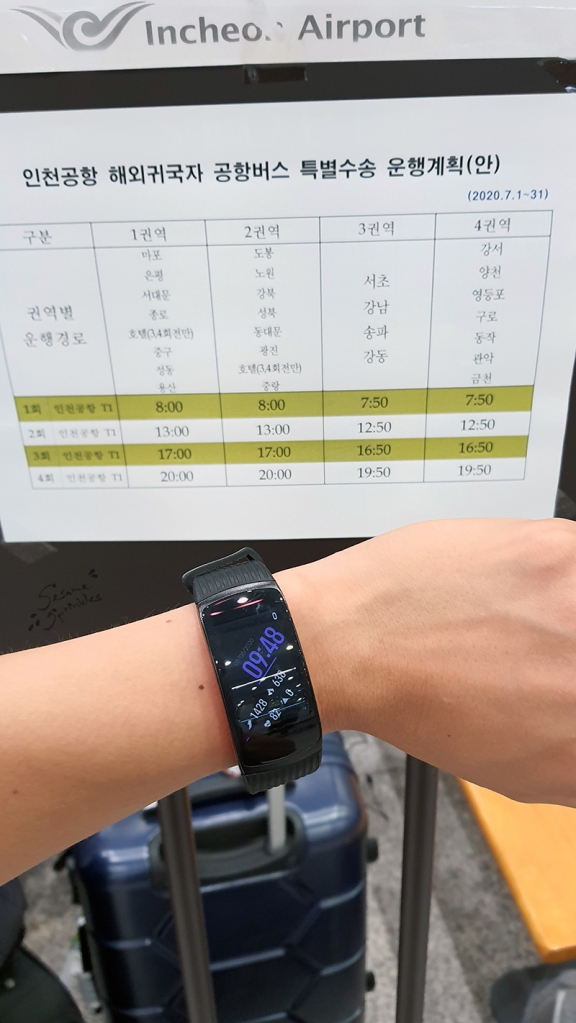
Checking time & schedule
On my journey, it was Saturday morning, around 9:50 AM, and the next bus was scheduled for 12:50 PM. So I had three hours of time left. Three hours to spend in the designated waiting area, along with fellow passengers who likewise didn’t have anyone to pick them up and had decided not to take a taxi.
Waiting. Waiting. Waiting.
In the meantime, I explored the area as best as I could, although it was rather small. One coffee shop (Angel-in-us Coffee) and one Korean restaurant (Bon uri bansang 본우리반상) were in operation. [There is more info for people interested in food here.] Additionally, there were two convenience stores (CU), but they were located outside the restricted area and only accessible with permission. Of course, the restrooms were available at all times. The drinking fountains were closed for hygienic reasons, though. Apart from that, benches and electrical sockets were available for you and your electronic devices. Last but not least, there’s FAST and free Wi-Fi all over Incheon airport. [Hooray for high-speed internet connections!]

Dessert cafe 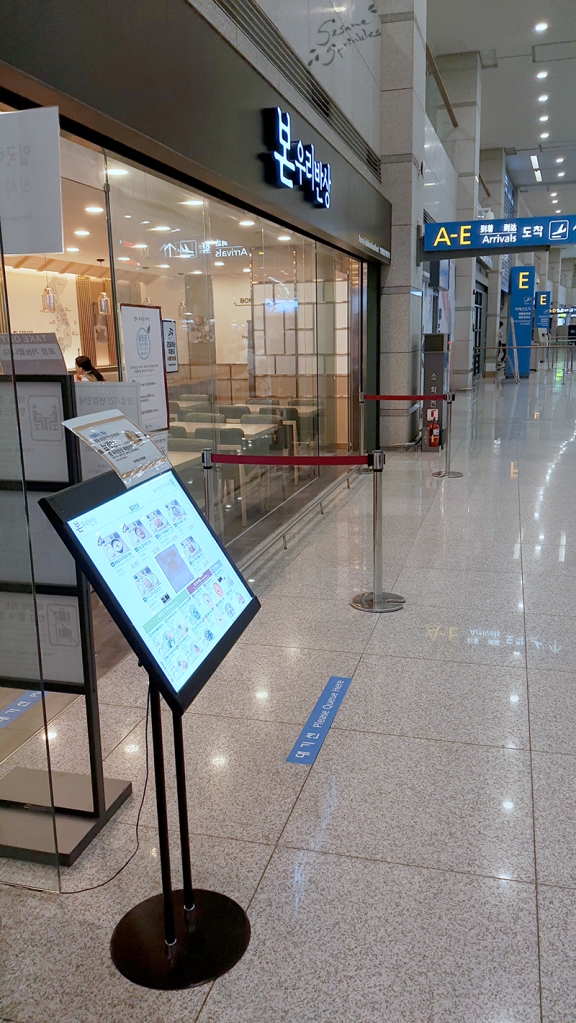
Korean restaurant 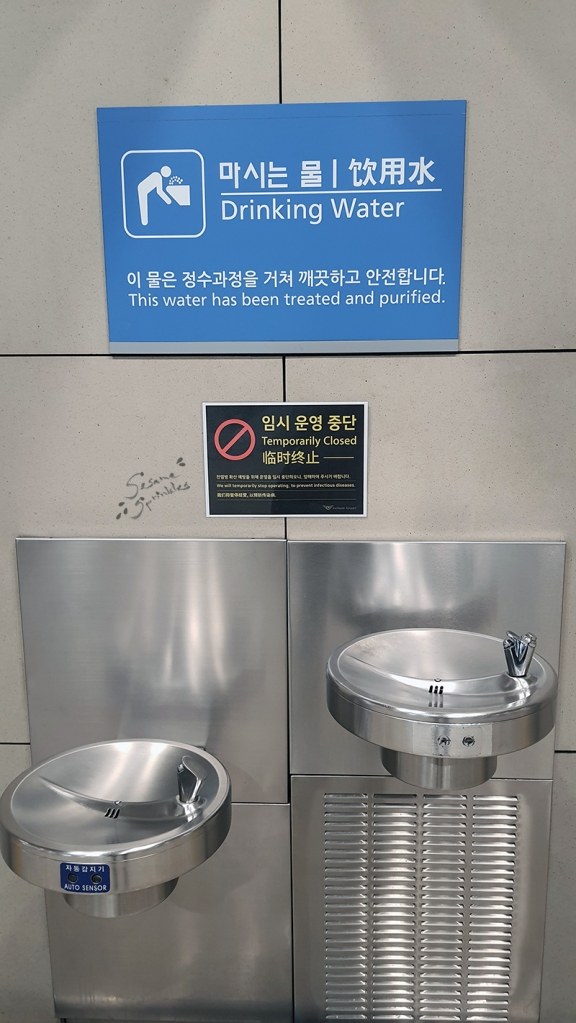
Out of order
At long last, 10 minutes prior to the scheduled departure, people lined up according to their bus route. Airport staff made sure that everyone who had registered showed up by checking the list we had filled in earlier. Passengers who were not present yet received a phone call. When the bus arrived, the next order was: Store the suitcase under the bus and get on board. Time to leave the airport!
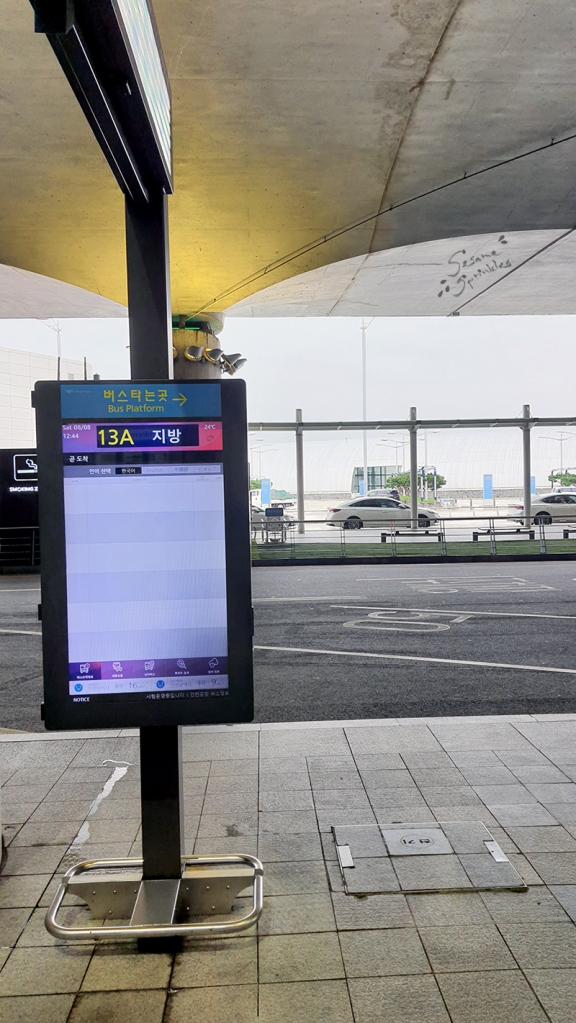
At the airport’s bus stop 
Inside the bus 
View from inside the bus towards Yeongjong Bridge
Testing for Covid-19
My bus was heading toward the south-western districts of Seoul and the ride to Gwanak-gu took approximately 90 minutes, as usual. The bus did not drive to the regular airport bus stops, but halted directly in front of the health centers of each district. Eventually, the bus reached my district’s health center, where someone had been waiting for the new arrivals. We were guided towards the Corona testing station and immediately received questionnaires about the state of our health and past activities. After a health officer checked them, we waited our turn to have our samples taken. People were tested one by one by a health worker inside a cabin with transparent plastic walls.
I was asked to step closer so that the gentleman could reach me with his arms, which were protruding in plastic gloves with arm-long sleeves from holes in the plastic barrier. “Please open your mouth and say ‘Ahhh’, keep saying ‘Ahhh’ a little longer”, he said while sticking a long cotton swab down my throat. First sample taken. “Now I have to put the next one deep into your nose. Try not to move backwards, even if it is unpleasant”, he said and soon did as he had announced. As if intending to distract my brain, he simultaneously started to ask me questions typical of Korean small talk. But it was difficult to answer with a cotton swab wagging around in my nostril, which made me feel like the whole procedure would end in a gigantic sneeze. It did not, fortunately, and the second sample was successfully retrieved. I was still a little perplexed but my part of the testing for the Coronavirus was over. The gentleman sealed the wet cotton swabs inside a small container with my name on it, and stored it along with the other samples of that day. Except for the waiting time, the test itself was over within a few minutes.
I was told that samples will be analyzed via PCR method and I would be notified about the Corona test results within 1 or 2 days. Apart from that information, I received a “Quarantine Notice” (격리통지서) along with more leaflets about “Quarantine Guidelines” (생활수칙). Ready to go home now?
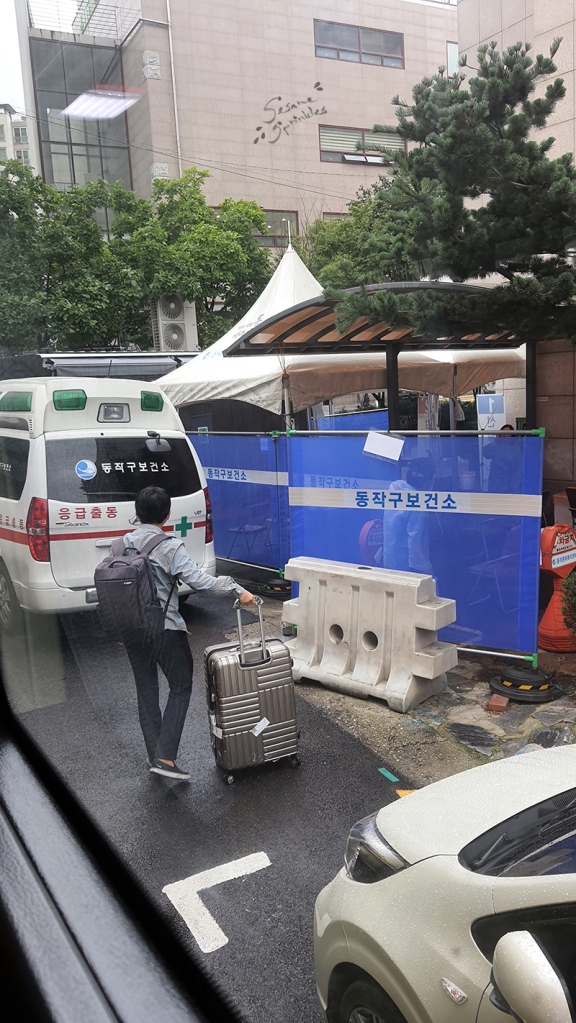
Stop at a health center 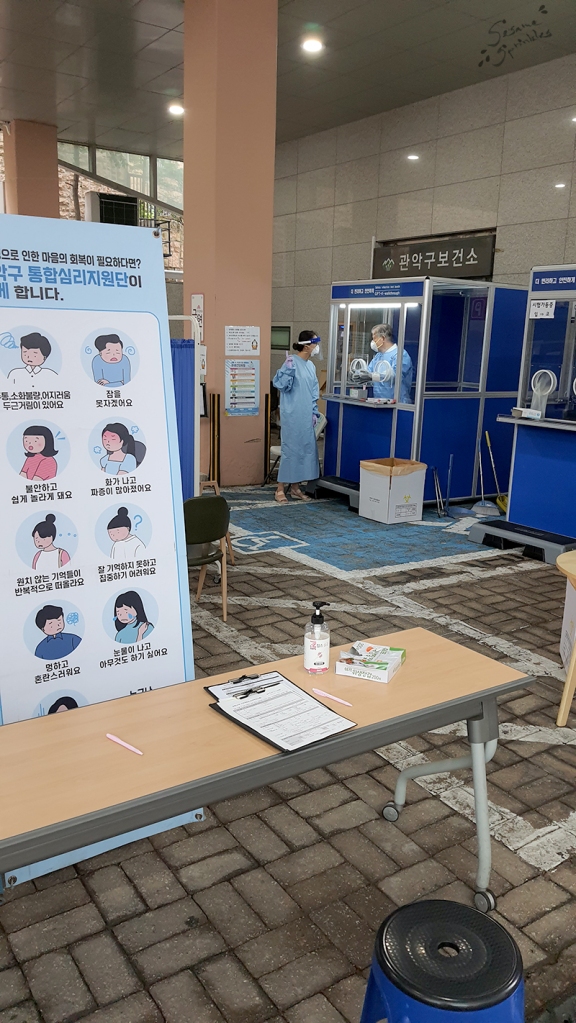
A district’s health center 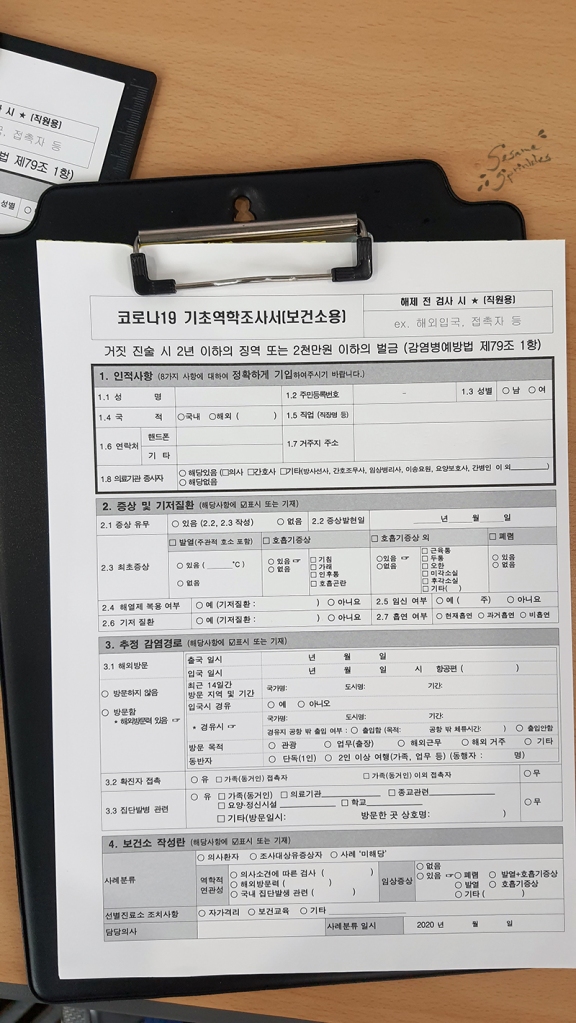
Questionnaire
Transport to quarantine location
Contrary to my expectations, I was not fully released yet. I was not allowed to walk home, I was not allowed to take public transport.
Outside the Health Center, there was a special, jumbo-size taxi which had been waiting for the most recent arrivals. Equipped with sanitizing liquids and a plastic barrier separating passengers from the driver, the taxi brought us to each individual’s quarantine location.

Special taxi waiting in front of the health center 
Inside the taxi 
Arrival at the house
Since I was the last person to get off, I asked the taxi driver how many people he’d transport from the health center. Currently, he replied, he would transport 3-8 incoming passengers (internationals as well as Koreans) a day. After getting off, I noticed that I had not been charged for the taxi ride. Perhaps the pay was included in the bus ticket? Normally, the fee for a bus ticket from Incheon airport to the downtown area of Seoul cost between 10.000 and 15.000 KRW (8.50-13 USD).

Regardless, I had arrived. At last. Where it normally takes 1.5 to 2 hours from the airport to the city of Seoul, the entire process lasted more than 7 hours today: My plane had landed in Incheon around 8 AM, but by the time I arrived at home it was past 3 PM.
Now, it was time for quarantine. I needed to spend the next 14 days at home, without going outside. Luckily, my quarantine buddy was already waiting for me… [Find information about spending quarantine in Korea in this post!]
.
In summary: What are the key differences to traveling to Korea now?
Long story short, here are the main changes to the travel routine summarized in key words:
- fewer travelers in general (August is peak travel season in Korea)
- requirement of wearing masks throughout the entire journey
- limited food available inside the plane and at airports
- fewer stores operating at airports; selection of offered goods is reduced to the essentials
- single use items are prevalent for the sake of hygiene and practicability
- a lot of paperwork is involved:
- additional documents need to be prepared in advance as well as after arrival at the airport
- provide information about where you’re staying, cell phone number (Korean contact person’s cell phone number is okay)
- installation of special quarantine apps is required
- getting out of the airport (including passing health and security checkpoints and immigration control) takes a very long time****
- transport from airport to final destination possible only in regulated vehicles. No public transport
- mandatory Corona test before transportation to quarantine facility. No extra charge for Covid-19 test
- mandatory 14 days of quarantine after arrival
The new procedures – including document screening, transport regulations, the Covid test and mandatory quarantine – apply to all incoming travelers to South Korea, i.e. Korean citizens as well as foreign visitors and residents. The detailed report above illustrates a personal perspective of the travel process to Korea as of August 2020.
.
.
Additional notes from the author
*) My experience may not reflect the case for everyone. I am not a short-term visitor, like a tourist or businessman, nor do I have diplomatic status. Legally, I am considered a foreigner who has an alien registration card with a long-term visa for South Korea. I speak enough Korean to understand and follow the Korean instructions during the process, which allows me to see more of the locals’ view.
**) Varying by airline, alternative routes I’ve taken in the past are e.g. via Amsterdam, Paris, London, Abu Dhabi, Istanbul, Warsaw and Beijing.
***) On previous flights, I experienced that special meals were often served 15-20 minutes in advance to the regular meals. This time, however, everybody received their meal at the same time. No health-relevant advantage of eating first, here.
****) I remember how years ago, getting through immigration as a foreigner was faster than as a Korean citizen. Now, there are actually queues of foreigners lining up in front of passport control.
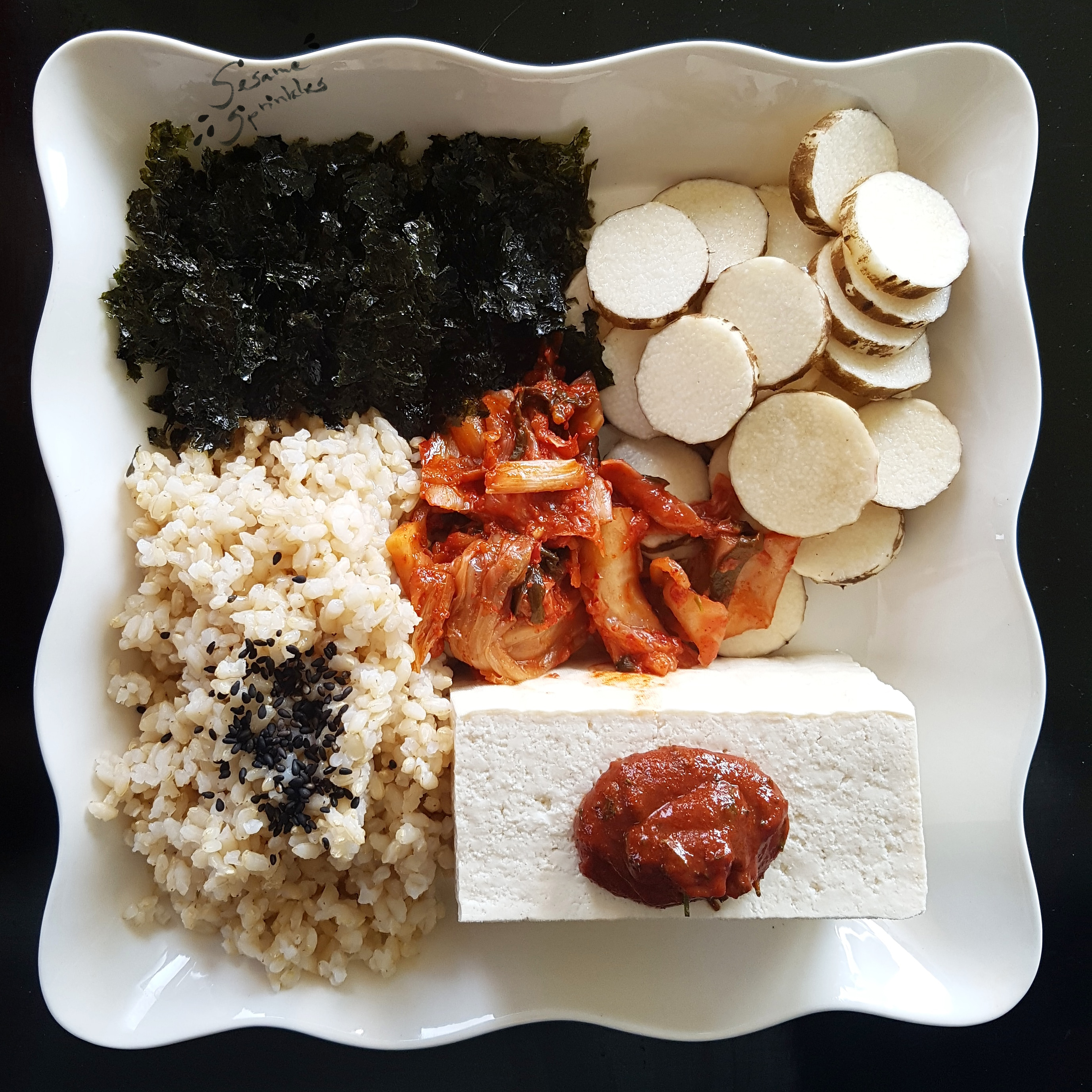






Thanks for this clear and detailed article. I freaked out when I read “staff asked for a health certificate with Corona test results” because airlines should let passengers know when booking the ticket not when you arrive at the airport!!
Positive aspect seems that you have plenty of space and 2 full seats just for you
LikeLiked by 1 person
Thank you for your kind comment! 😊 The point you mention confused me as well! Actually, there were some passengers who actually had a written certificate. It seems to be different from case to case. It’s probably best if you inquire at the Korean embassy or consulate after all…
LikeLiked by 1 person
What a word. Thanks for this freshly published article. Very thoughtfully jotted down steps on your adventure. Just regarding to the app (you have downloaded), how these things works/ What you can do with it?
LikeLiked by 1 person
Thank you for your interest! 🙂 Regarding the two apps, they are tracking my location and collect information about my current health status. Every day, I need to submit my body temperature and whether I experience any of the typical Corona symptoms. If I forget, then the apps remind me! I will explain more about them in the next post about Quarantine 🙂
LikeLiked by 1 person